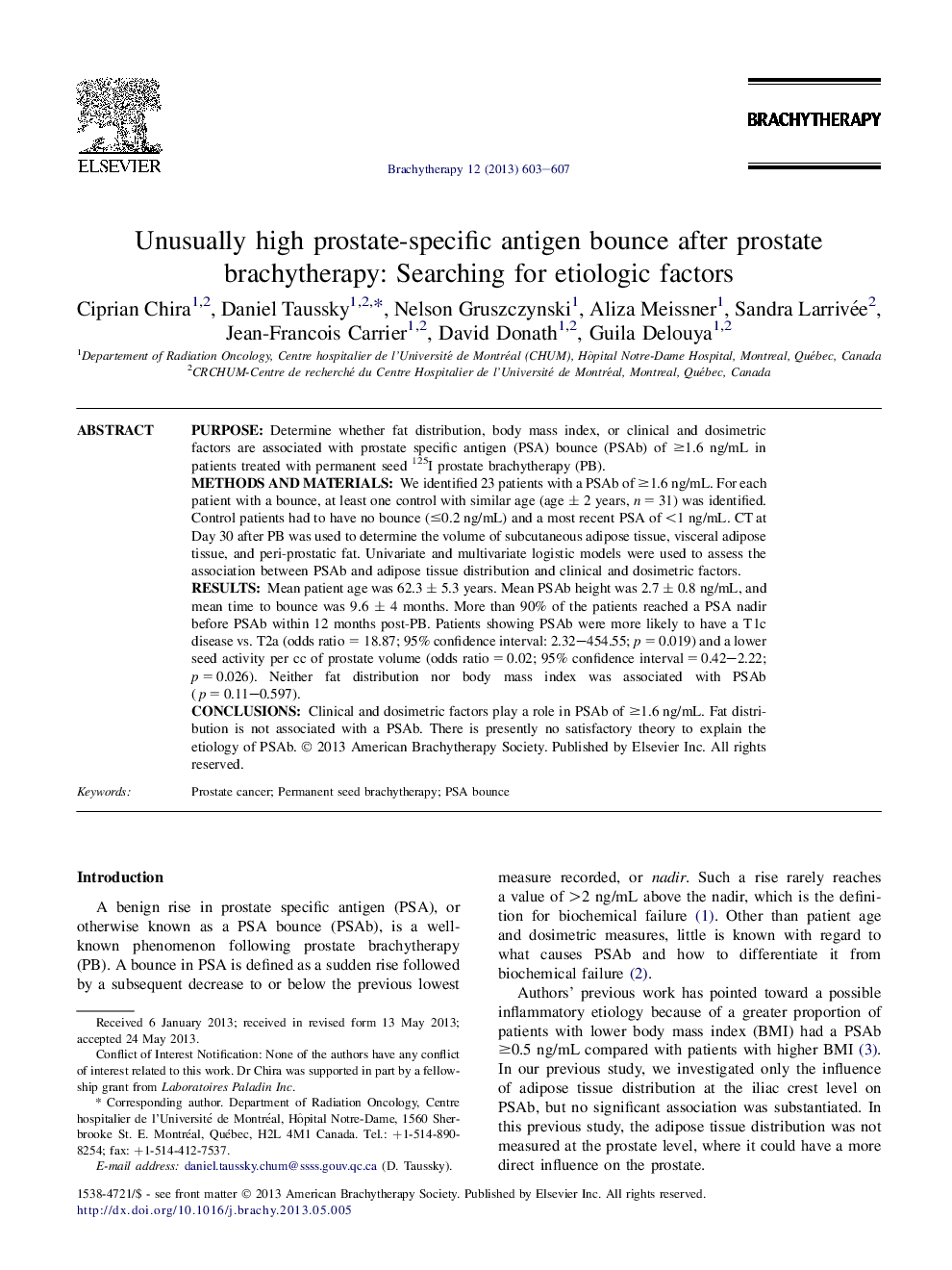| Article ID | Journal | Published Year | Pages | File Type |
|---|---|---|---|---|
| 6189718 | Brachytherapy | 2013 | 5 Pages |
PurposeDetermine whether fat distribution, body mass index, or clinical and dosimetric factors are associated with prostate specific antigen (PSA) bounce (PSAb) of â¥1.6 ng/mL in patients treated with permanent seed 125I prostate brachytherapy (PB).Methods and MaterialsWe identified 23 patients with a PSAb of â¥1.6 ng/mL. For each patient with a bounce, at least one control with similar age (age ± 2 years, n = 31) was identified. Control patients had to have no bounce (â¤0.2 ng/mL) and a most recent PSA of <1 ng/mL. CT at Day 30 after PB was used to determine the volume of subcutaneous adipose tissue, visceral adipose tissue, and peri-prostatic fat. Univariate and multivariate logistic models were used to assess the association between PSAb and adipose tissue distribution and clinical and dosimetric factors.ResultsMean patient age was 62.3 ± 5.3 years. Mean PSAb height was 2.7 ± 0.8 ng/mL, and mean time to bounce was 9.6 ± 4 months. More than 90% of the patients reached a PSA nadir before PSAb within 12 months post-PB. Patients showing PSAb were more likely to have a T1c disease vs. T2a (odds ratio = 18.87; 95% confidence interval: 2.32-454.55; p = 0.019) and a lower seed activity per cc of prostate volume (odds ratio = 0.02; 95% confidence interval = 0.42-2.22; p = 0.026). Neither fat distribution nor body mass index was associated with PSAb (p = 0.11-0.597).ConclusionsClinical and dosimetric factors play a role in PSAb of â¥1.6 ng/mL. Fat distribution is not associated with a PSAb. There is presently no satisfactory theory to explain the etiology of PSAb.
